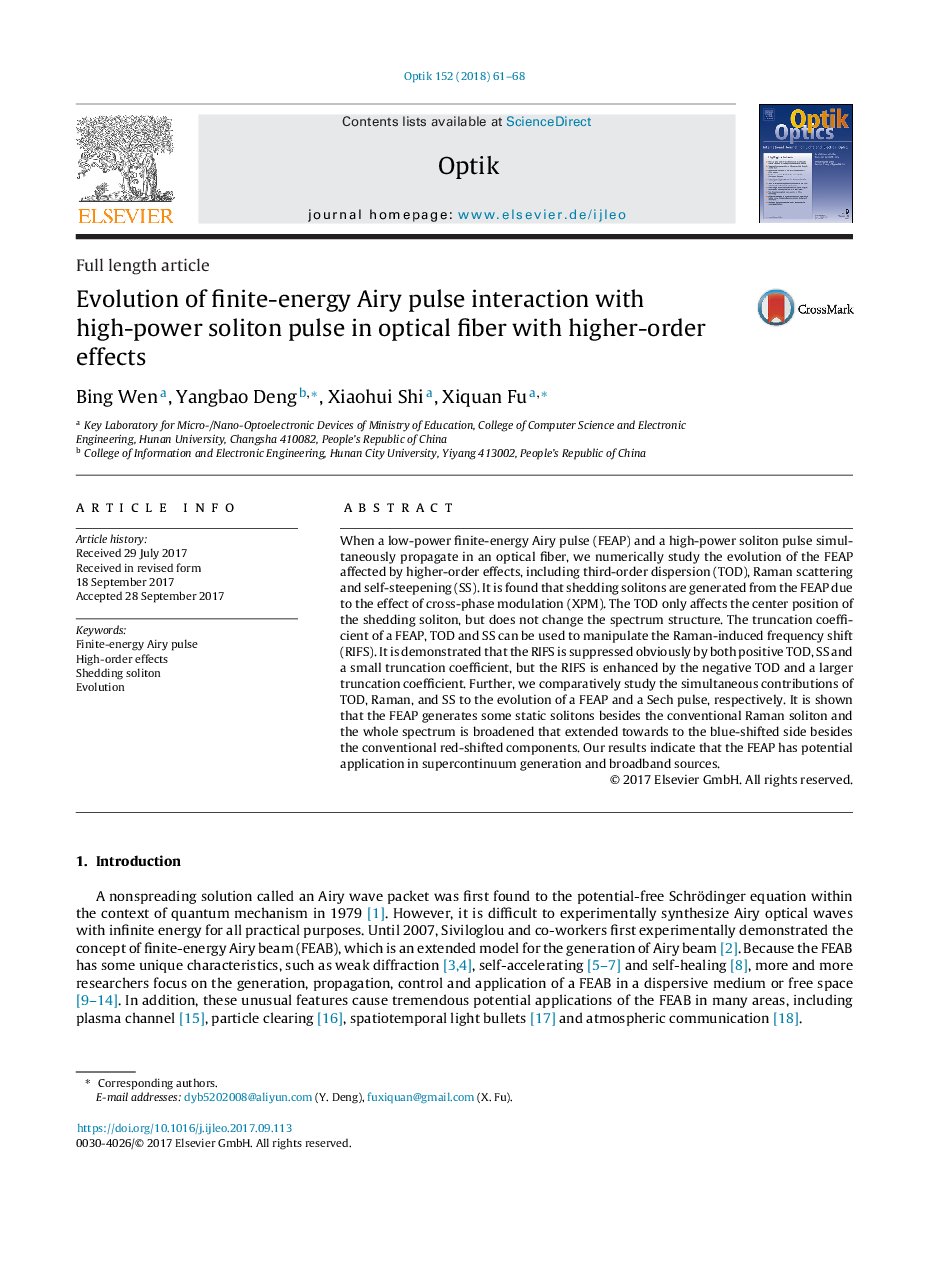| Article ID | Journal | Published Year | Pages | File Type |
|---|---|---|---|---|
| 7225324 | Optik - International Journal for Light and Electron Optics | 2018 | 8 Pages |
Abstract
When a low-power finite-energy Airy pulse (FEAP) and a high-power soliton pulse simultaneously propagate in an optical fiber, we numerically study the evolution of the FEAP affected by higher-order effects, including third-order dispersion (TOD), Raman scattering and self-steepening (SS). It is found that shedding solitons are generated from the FEAP due to the effect of cross-phase modulation (XPM). The TOD only affects the center position of the shedding soliton, but does not change the spectrum structure. The truncation coefficient of a FEAP, TOD and SS can be used to manipulate the Raman-induced frequency shift (RIFS). It is demonstrated that the RIFS is suppressed obviously by both positive TOD, SS and a small truncation coefficient, but the RIFS is enhanced by the negative TOD and a larger truncation coefficient. Further, we comparatively study the simultaneous contributions of TOD, Raman, and SS to the evolution of a FEAP and a Sech pulse, respectively. It is shown that the FEAP generates some static solitons besides the conventional Raman soliton and the whole spectrum is broadened that extended towards to the blue-shifted side besides the conventional red-shifted components. Our results indicate that the FEAP has potential application in supercontinuum generation and broadband sources.
Keywords
Related Topics
Physical Sciences and Engineering
Engineering
Engineering (General)
Authors
Bing Wen, Yangbao Deng, Xiaohui Shi, Xiquan Fu,
